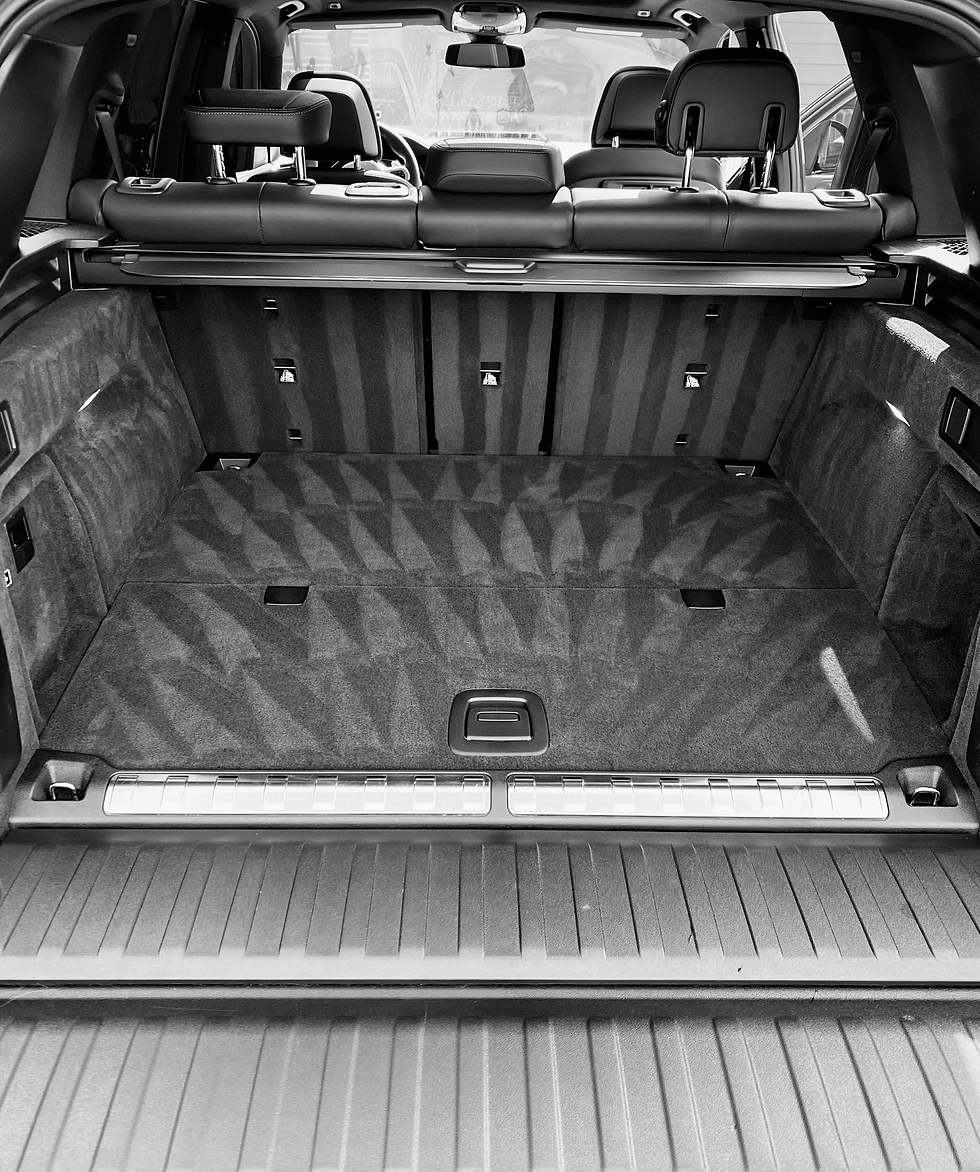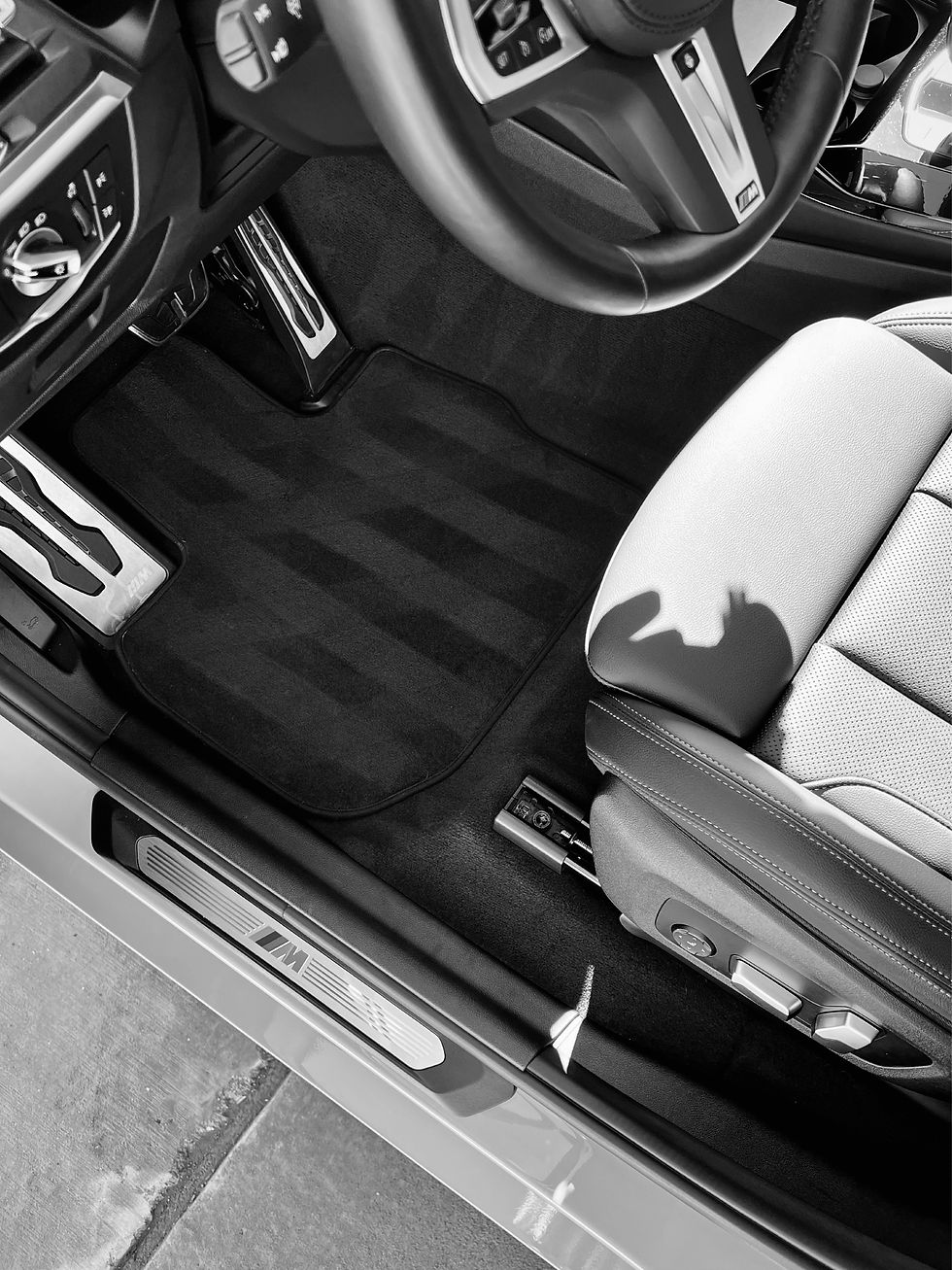The Vanishing Act: The Science Behind Upholstery Wicking and Stain Removal
- Andrew

- Mar 1, 2024
- 4 min read
Updated: Jun 17, 2024

In the world of automotive detailing, achieving a spotless finish isn’t just an art, it’s also a science. Every stubborn stain from coffee spills to grease marks, presents a unique challenge that requires a deep understanding of the chemistry and the principles behind effective stain removal. In this article, we delve into the fascinating world of stain removal as it relates to automotive detailing, and the chemistry behind the removal of even the most stubborn soiling.
Choosing between dry-shampooing and hot water extraction for upholstery cleaning depends on various factors, including the type of fabric, the severity of the stains, and the desired outcome. Dry shampooing, also known as dry cleaning, is typically advisable when dealing with delicate fabrics that are not suitable for moisture-based cleaning methods. Fabrics such as silk, alcantara, suede, velvet, and wool can be damaged by excessive moisture, causing shrinkage, discoloration, or distortion of the fibers. It is also suitable for light soiling or surface-level stains that do not require deep penetration for removal. Ultimately, the decision between the two efficacious methods should be based on the thorough assessment of the upholstery material and the specific cleaning requirements of the situation at hand.
The Science of Stain Wicking
Upholstery wicking, or the phenomenon of stains reappearing after cleaning, is a persistent challenge in auto detailing, particularly when dealing with cloth upholstery. Understanding the chemistry behind this process sheds light on why it occurs and how it can be mitigated. When a stain penetrates fabric fibers, it doesn’t necessarily stay confined to the surface; instead, it can seep deeper into the material, reaching layers that traditional cleaning methods might not fully address.
In the case of cloth upholstery, residual moisture from cleaning can activate leftover stains stuck within the foam of your upholstery, causing them to resurface over time. This is due to the fact that the water used in the extracting process, unless properly extracted, remains dormant within the fabric until the superficial surface dries, at which point capillary action draws the stain back to the surface, resulting in wicking.
To combat wicking and achieve thorough stain removal, Flatirons Detailing often employs the use of heated water extractors or steaming extractor systems. These specialized machines that cost well over two-thousand dollars a piece, utilize powerful suction to penetrate deep into fabric, dislodging contaminants and extracting them from the upholstery. The heat from the water or steam not only helps to break down stubborn and engrained stains, but also accelerates the drying process, minimizing the risk of wicking.

The Chemistry of Stain Removal: Molecular Precision
The process of using a heated water extractor begins with pre-treating the stains area with a suitable cleaning solution. We understand that the choice of cleaning solution crucial to the stain’s removal, as it must be compatible with both the upholstery material, and must be pH-balanced to prevent further staining or damage. For example, acidic stains like coffee or wine may require alkaline cleaners to neutralize and lift the stain, while alkaline stains like grease or oil may require acidic cleaners for effective removal. In recent years, the use of enzymatic chemicals has gained prominence in the world of automotive detailing. Enzymes are biological catalysts that accelerate chemical reactions, making them highly effective at breaking down organic stains such as blood, urine, and food residues. By harnessing the power of nature’s cleaners, Flatirons can achieve remarkable results without relying on harsh chemicals or solvents.
Mechanical Action: A Gentle Touch
While chemical cleaners play a vital role in stain removal, they’re not the only players on the field. Mechanical acton, such as scrubbing and light agitation, is equally important. By physical breaking down the bonds between the stains and the surface, mechanical action helps loosen dirt and grime, making it easier for the steam and chemicals to do their jobs. However, it is essential to strike the correct balance - too much force could damage surfaces like suede and certain fabrics, while too little may not be effective against stubborn stains. It is important for clients to understand that despite our best efforts and knowledge, stains that have sat for years may not fully extract due to the oxidation that has taken place.

Once the cleaning solution has been applied, dwelled, and has been agitated, the extractor is used to inject hot water into the upholstery while simultaneously vacuuming up the solution along the dissolved contaminants. The high temperature of water aids in breaking down certain stains and emulsifying oils, making them much easier to remove. This dual-action process ensures not only a thorough cleaning, but minimizes the risk of wicking by promoting quicker drying times.
Conclusion
Auto detailing requires a complex blend of meticulous attention to detail and scientific precision. Stain removal, in particular, showcases the intricate interplay between chemistry, physics, and mechanical action. By understanding the underlying principles behind stains and cleaning agents, skilled detailers can transform even the most soiled interiors into pristine and peaceful automotive cabins. So, the next time you marvel at the impeccable cleanliness of your vehicle’s interior, take a moment to appreciate the scientific mastery that made it possible. Behind every spotless surface lies a wealth of knowledge and expertise, proving once again that in the world of auto detailing, science truly shines.
_edited_e.png)